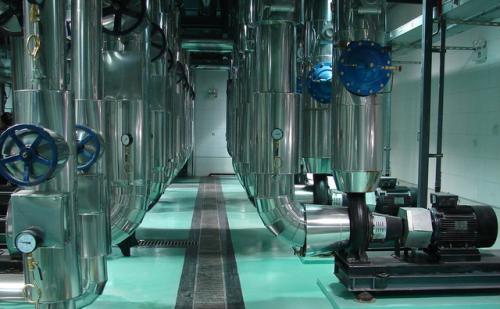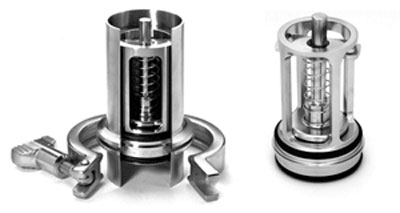How to Select a Suitable Sanitary Check Valve?

Sanitary check valves are classified as follows according to service.
Swing sanitary class check valve
The disc of the swing check valve is disc-shaped and rotates around the axis of the seat channel. The flow resistance of the valve is smaller than that of the lift check valve because of the streamline of the inner passage of the valve, so it is suitable for large caliber applications with low velocity and in constant flow. But it is not suitable for pulsating flow since its sealing performance is not as good as the lifting type.
Lift sanitary check valves
The upper part of the disc and the lower part of the cover of the lift sanitary check valve are processed with guide sleeves so that the guide slips of the disc can be lifted and lowered freely within the guide slips of the valve cup. When the medium forward flows, the disc will be opened by the medium thrust; when the medium stops flowing, the disc will sag down on the seat, thus preventing the medium from counterflow.
Disc sanitary check valve
A disc sanitary check valve is a check valve in which the disc rotates around a pin in the seat. The dish sanitary check valve is simple in construction and can only be installed in horizontal pipes, so its sealing is poor.
Pipe sanitary check valve
Pipe sanitary check valves are valves in which the disc slides along the centerline of the valve body. The pipeline check valve is a new kind of valve, with small volume, lightweight, and good processing technology is one of the development directions of the check valve. However, the hydraulic resistance coefficient of the pipeline sanitary check valve is slightly higher than that of the swing check valve.
How to select a suitable sanitary check valve?
Sanitary class check valves for compressible liquids
Although check valves are used incompressible fluid lines to minimize disc impact, they can be selected according to similar selection methods for incompressible fluids using check valves. However, the impact of compressible media may become considerable for very large pipelines.
Check valves for compressible liquids may use a speed reducer if the range of media flow is large. The device works during the entire slow movement of the closing member to prevent rapid and continuous hammering on its end.
Lift check valves are used if the media flow continues to stop and start rapidly, as in the outlet of the compressor. This check valve uses a lightweight disc that can withstand a spring load and has a low lift.
Dimensions of sanitary check valves
Check valves shall be sized so that normal fluid keeps the shutoff open steadily. For a maximum shut-down time, the check valve should close as soon as possible after the downstream medium begins to slow down. In order to size the valve in this case, the valve manufacturer must provide data for the selected size. In this way, it should be possible to find the valve size at a given flow rate when the valve is fully open.
Selection of sanitary class check valve types
* For high-pressure check valves below DN50mm, vertical lift check valves and straight lift check valves should be used;
* For low-pressure check valves up to DN50mm, butterfly, vertical lift, and diaphragm check valves are preferred;
* For high-pressure check valves with DN greater than 50mm and less than 600mm, swing check valves are recommended;
* For DN greater than 200mm, less than 1200mm in the middle and low-pressure check valve, it is appropriate to choose a non-wear spherical check valve;
* Slow closed swing check valve and slowly closed butterfly check valve should be used for piping with low or no water impact.





